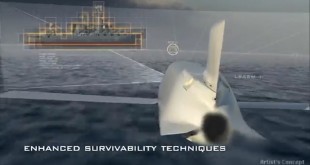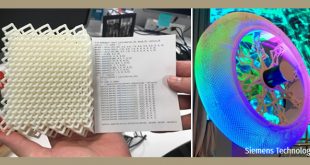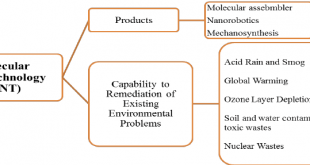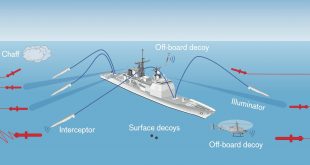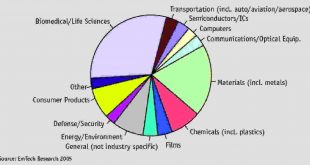Artificial intelligence is a branch of computer science dealing with the simulation of intelligent behavior in computers. A computer system able to perform tasks that normally require human intelligence, such as visual perception, speech recognition, decision-making, and translation between languages. Machine learning is a subset of AI. AI has a …
Read More »TimeLine Layout
December, 2021
-
27 December
Quantum Computer Hardware component breakthroughs accelerate their scaling and commercialization
Quantum computers promise the potential to tackle problems that conventional computers can’t handle by leveraging a phenomenon of quantum physics that allows qubits to exist in multiple states simultaneously. As a result, qubits can conduct a large number of calculations at the same time — dramatically speeding up complex problem-solving. …
Read More » -
27 December
DARPA TRADES Developed new Design Tools to Exploit Advanced Materials and Manufacturing Technologies
Manufacturing technology breakthroughs in recent years, such as 3D printing, have allowed precise material placement, new material behaviors, and complex shaping of parts and structures. Design tools, however, have not kept up with the complexity of the design space resulting from these advances. DARPA’s TRAnsformative DESign (TRADES) program, which …
Read More » -
25 December
Molecular nanotechnology
The amount of information trafficking internet nowadays is enormous and will increase further in the near future. It can be expected that in the next decennia the current technologies to store and process data will no longer suffice and that other strategies to handle information have to be developed. One …
Read More » -
23 December
Navies integrating AI into Naval vessels
The general definition of AI is the capability of a computer system to perform tasks that normally require human intelligence, such as visual perception, speech recognition and decision-making. Machine Learning (ML) is a subfield of Artificial Intelligence which attempts to endow computers with the capacity of learning from data, so that …
Read More » -
20 December
Bio-Inspired Micro Air Vehicle for better flight performance, controlability and endurance
UAVs are Aircrafts that are piloted remotely by some person who is at a different place. These UAVs of various sizes and shapes can fly continuously for more than 24 hours and some of them can only fly for less than 30 minutes. Some UAVs have wings of several meters …
Read More » -
19 December
Nanotechnology, one of the fastest growing markets in the world
Nanotechnology deals with the understanding, control, and manufacture of matter in the nanoscale regime, usually between 1 nm to 100 nm, and exploiting them for a useful application. At this length scale, unique properties and phenomena arise as a result of increased surface-to-volume ratio and dominance of quantum mechanical effects. …
Read More » -
18 December
Pollution control strategies and technologies to fight growing menace of pollution deaths
Atmospheric pollution is a growing problem, particularly in urban areas and in less developed countries. With half the world has no access to clean fuels or technologies (e.g. stoves, lamps), the very air we breathe is growing dangerously polluted. More than 8 million people around the world die each year …
Read More » -
17 December
Emerging Network Centric Electronic Warfare enabled by UAVs and UAV swarm technologies
The current platform-centric EW systems are limited in their ability to generate essential EW effects required to counter emerging threat system developments and employ advanced EW concepts. The adversaries are fielding increasingly sophisticated networked and agile systems, RF sensing and communications systems, including short-range tactical communications, long-range command and control (C2) …
Read More » -
16 December
Spider silk one of the strongest materials on Earth for military applications of body armor and parachute material
Spider silk is also known as gossamer. It is a sought-after biomaterial. Spider silk is a protein fiber made in the glands of a spider. This silk is flexible and lightweight. These fibers are waterproof and have a tensile strength similar to that of steel. These fibers can be stretched …
Read More »
 International Defense Security & Technology Your trusted Source for News, Research and Analysis
International Defense Security & Technology Your trusted Source for News, Research and Analysis
